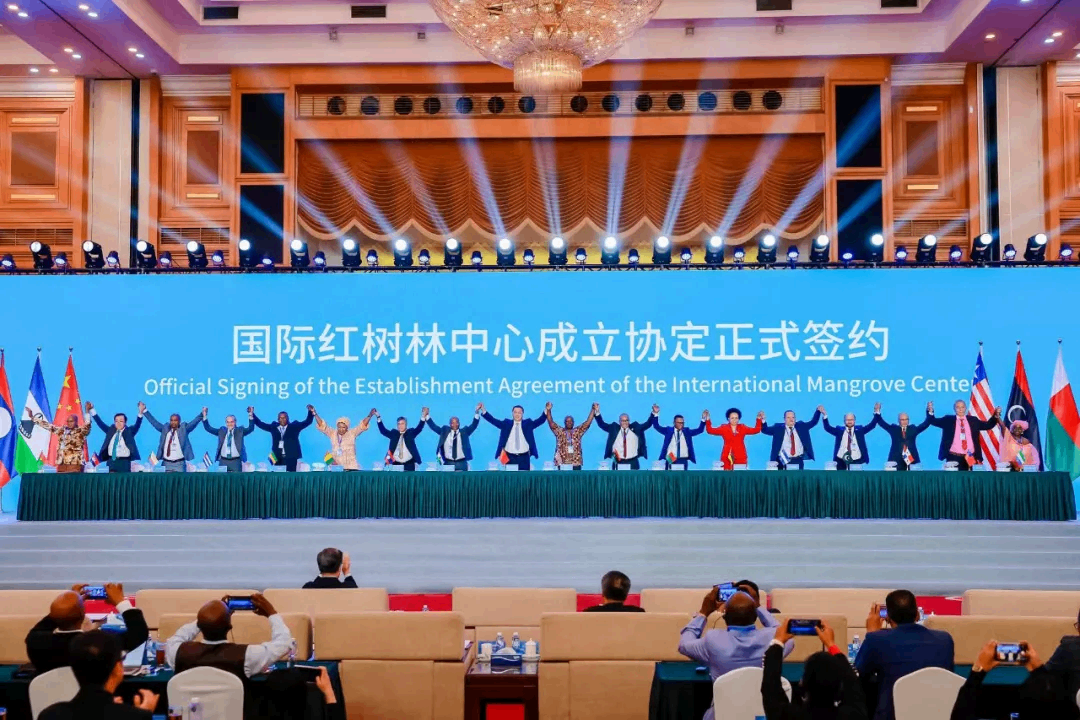SHENZHEN, China – November 6, 2024 – Representatives from 18 countries gathered in Shenzhen on Monday to officially sign the agreement establishing the International Mangrove Center (IMC), marking a significant step in global efforts to protect and restore mangrove ecosystems. The ceremony also included the unveiling of the Center’s nameplate, formally inaugurating the world’s first intergovernmental international organization dedicated to mangrove conservation.

Mangroves, found in tropical and subtropical coastal regions, are among the most productive marine ecosystems on the planet. Recognizing the critical role of mangroves in purifying seawater, reducing storm impacts, maintaining biodiversity, and capturing and storing carbon. The establishment of the IMC was proposed by the Chinese President Xi Jinping, supported by Cambodia and Madagascar, at the RAMSAR COP14 in Wuhan, China, Geneva, Swiss land on November 5, 2022. On September, 6, 2023, the regional initiative proposal for establishing the IMC in Shenzhen, China was endorsed via Decision sc 62-22 at the 62nd Standing Committee Meeting of the Ramsar Convention.
The mission of IMC is to promote international cooperation and joint actions in mangrove conservation, restoration, and wise and sustainable use strengthen the implementation of the Convention, and other relevant current and future environmental commitments, including but not limited to the Kunming-Montreal Global Biodiversity Framework, the Paris Agreement, the 2030 Agenda for sustainable Development along with its sustainable Development Goals
Looking ahead, the IMC is expected to promote knowledge sharing and strengthen joint research cooperation, enhance technology transfer and scientific and technical cooperation, and training on mangrove conservation, restoration, and wise and sustainable use; to develop education, information, communication, and public awareness mechanisms on mangroves and adjacent wetlands; to build and/or enhance capacity, and conduct pilot projects on priorities for mangrove conservation, restoration, and wise and sustainable use.